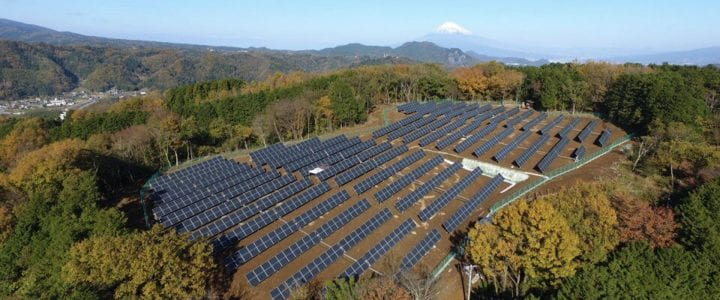Background:
North East Water (NEW) are a water and sewage services provider in north-east Victoria, supplying to approximately 108,000 people across 39 towns. They operate 20 water treatment facilities and 21 wastewater treatment plants (WTP), covering an area of 20,000 square kilometres. They also operate one trade waste facility and provide recycled water for both drinking and irrigation use.
In adjusting to the challenges that come with climate change, North East Water – a regional water and sewage service provider in Victoria – has dedicated itself to reducing its carbon footprint and implementing sustainable business practices. In line with their focus on emissions reduction, NE Water have recently constructed a 3MW solar PV field behind-the-meter at the West Wodonga WWTP. This plant is expected to be operational early in 2021.
The benefits that come from this transition are multifold: not only will the company generate renewable energy and mitigate its contribution to greenhouse gas emissions, it will also reduce reliance on the electrical grid, which may become unstable due to extreme weather events and growing uptake of local solar power generation.
It is imperative that North East Water can make well informed decisions when operating the solar facility at its water treatment plant. It is for this reason that RMIT students in collaboration with the Greenhouse and Sustainability Program (GSP) are engaged in this project.
Objective:
The objective of the project is to investigate and review the most cost-effective business strategy for the operation and integration of a new 3MW solar plant at West Wodonga. To achieve this objective the project will build upon work undertaken in 2020 by a cohort of RMIT students and undertake several key tasks.
- Update the historical energy demand and pricing at the WW site (and other large energy consuming sites across the NEW business), identifying the influence of season and weather.
- Compare the actual energy generation from the 3MW plant to the predicted generation.
- Review the proposed strategy for self-consumption and/or export of solar power from the WWTP site in the context of;
- Net metering arrangements
- Network tariff structures
- Hedging arrangements
- Ability for load shifting (both at WWTP site and other wholesale market exposed sites within the NE Water portfolio)
- Review the opportunities for NE Water to engage in flexible demand initiatives, including regular load shifting to minimise energy costs on the wholesale market and peak demand response events (e.g. RERT). This may include review and evaluation of the benefits from proposed operational changes (e.g. for sites such as Mill St pumping station, and review of opportunities from specific infrastructure upgrades (such as tank or pump capacity).
- Review the opportunity for load shifting to be used to lower the carbon intensity of NE Water’s operations.
Deliverables:
The deliverables of this project will be staged with an initial focus on data collection.
| Deliverable | Description | Initial Timing Estimate |
| Commencement Workshop | Collect Data from NEW (data for 2020)
● Historical energy prices ● Historical energy use by NEW including peak usage ● Solar field data ● Individual student briefs and research questions |
Feb |
| Milestone 1 | Project Plan | March |
| Milestone 2 | Some preliminary analysis of Data
· Evaluation of historical energy prices · Historical energy use by NEW including peak usage.
|
May |
| Milestone 3 | Progress report. | Early June |
| Milestone 4 | Draft Project Report. | Early September |
| Milestone 5 | Project Report. | End September |
| A presentation on the project report. | End October |
Governance:
This project will be managed through weekly meetings of the students () whom will seek draft approval from the Project Managers (Marcos Anastassiou & Dr Cameron Stanley & Dr Kazi Hasan) and through frequent contact with the Project Sponsor to ensure work is satisfactory.
Reporting Requirements:
There will be draft approval and/or progress reporting fortnightly to the project managers.
Assumptions and Constraints:
Energy spot price is assumed to be primarily driven by time of day and temperature across the state.
Power usage from individual WTP across NEW’s network is expected to be available, as well as data on costs associated with shutting down.
Risks and Minimisation Strategies:
Incomplete data collection resulting in inaccurate recommendations.
- This will be minimised by collecting as much data as possible from as many sources as possible.
Low data resolution.
- The highest resolution data available will be sourced to ensure accuracy.
Guidelines/Standards:
Water Act 1989
Water Industry Act 1994
Survey of obligations and responsibilities under the Reliability and Emergency Reserve Trader (RERT) function of the Australian Energ

